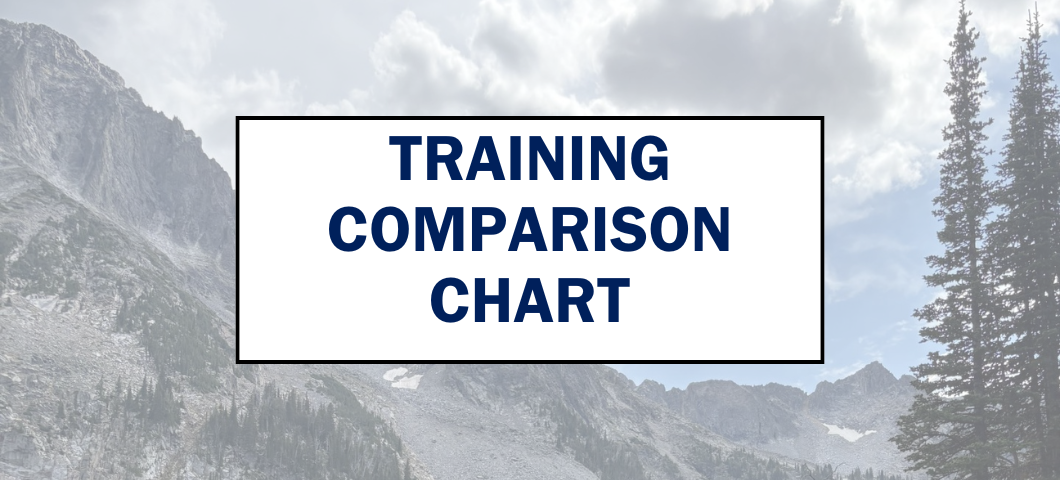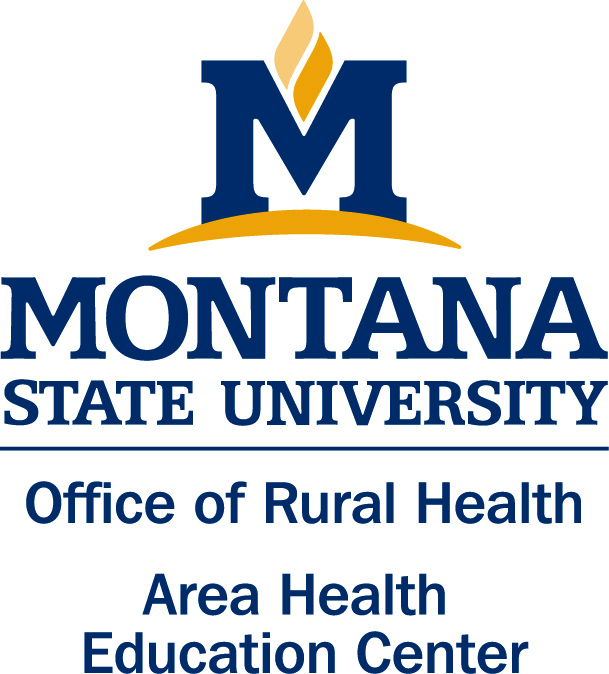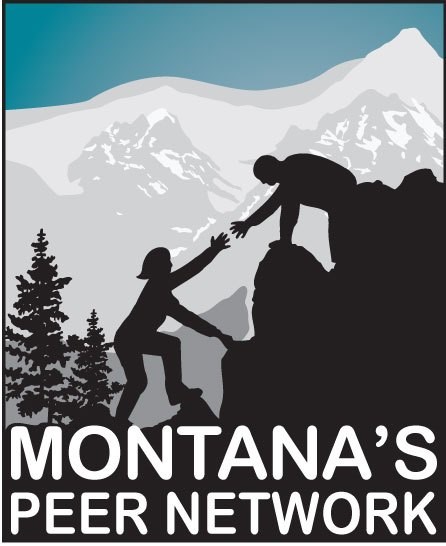Training Comparison Chart

| Community Health Worker | Fundamentals of Behavioral Health | Community Paramedicine | Behavioral Health Peer Support Specialist | |
|---|---|---|---|---|
| Requirements | High school diploma/GED preferred, have or gain computer literacy skills, employer sponsored preferred. |
Employment in healthcare setting preferred. |
Currently certified as an Emergency Medical Technician (EMT‐P) and have 2 years of full‐time service as an EMT‐P, or its part‐time equivalent. | Must identify as being in recovery from a behavioral health diagnosis and have sought treatment. |
| Training & Delivery Method | Approximately 85 hours over 7 weeks (five learning modules plus 25‐hour on‐the‐job supervised experience). Training is online, self-paced instructor‐ lead. | Approximately 60 hours over 9 weeks (nine online learning modules). Training is online, self‐paced, instructor lead. | 1 semester online, live instructor‐ lead through Missoula College. |
40 hours of initial training, with 20 CEU’s per year. |
| Training Costs | $1,5000.00 | $1,500.00 | Visit: CIH Missoula College for more information | Visit: MT Peer Network for more information. |
| Role | Serves as a liaison/ link/ intermediary between health/ social services and the community to facilitate access to services and improve quality and cultural competence of service delivery | Those already working in healthcare field to better understand and more effectively recognize and appropriately respond to behavioral health problems and mental health disorders | Help individuals and communities overcome barriers that prevent them from accessing and benefiting from health services. They serve as advocates, facilitators, liaisons, community brokers and resource coordinators. | Uses personal experience with a behavioral health diagnosis disorder to provide support, mentoring, guidance, and advocacy and to offer hope to individuals with behavioral health disorders. |
| Benefits to Agencies |
Connects clients with needed resources; clients receive cost effective, individual services; reduces readmission rates. |
Higher trained staff in behavioral health will increase retention and provide better patient outcomes. | Trained as direct service providers which will ensure basic and advanced levels of care appropriate to prevention, emergencies, evaluation, triage, disease management, and basic oral and mental health. |
Return on investment (i.e. $5 to $1 cost savings in diversion from high‐cost services observed in Gallatin County). |
| Work Settings | A variety of settings, including but not limited to ‐ hospitals, community‐based organizations, governments, clinics, and schools. | A variety of settings, including but not limited to – Emergency rooms, detention centers, mental mental health centers, community at large, CAH, FQHC, LTC, and ALF. | A variety of settings, including but not limited to organizations that provide community health care, EMS, and public health. | Emergency rooms, detention centers, mental health centers, community at large, FQHC, SUD centers, VA, diversion and treatment courts. |
| Training Providers |
Montana AHEC
|
Montana AHEC |
MT DPHHS: EMS & Trauma Systems / Community Integrated Health |
MT’s Peer Support Network
|
*Apprenticeship options available for most of these trainings: Call 406.444.4100 or email apprenticeship@mt.gov
|
|
Management of Aggressive Behaviors
(MOAB®) |
Applied Suicide Intervention Skills Training (ASIST)
|
Mental Health First Aid (MHFA)
|
Community Health Worker Add-on Modules
|
Additional Trainings
|
|---|---|---|---|---|---|
|
Requirements
|
None.
|
None.
|
None.
|
None.
|
See training provider for details on each training.
|
|
Training & Delivery Method
|
4‐hour, 8‐hour, and 12‐hour
training options, in‐person, on‐site |
2 day, in‐person, on‐site training. Online option also available.
|
1 day (8‐hour), in‐person, onsite. Adult & Youth options. Online option is also available. |
Online, self‐paced courses (approximately 2‐3 hours each).
|
Varies
|
|
Training Costs
|
Training costs may be covered with grant funds.
|
Training costs may be covered with grant funds.
|
Training costs may be covered with grant funds.
|
All modules are free of charge.
|
Varies, some may be covered with grant funds.
|
|
Role
|
Presents principals, techniques, and skills for recognizing, reducing, and managing
violent and aggressive behavior
|
Teaches participants to recognize when someone may have thoughts of suicide and how to work with them to create a plan that will support their immediate safety.
|
Can help those who regularly engage with individuals who may experience mental health
challenges and is most appropriate for audiences with no prior training or experience
with mental health or substance abuse.
|
Trainings Include:
|
Trainings Include:
|
|
Benefits to Agencies
|
Trained staff will be able to address the multitude of crises and stages of conflict to help calm people, diffuse anxious or aggressive behavior, avoid violence & injuries, & create confidence & the ability to improve any situation & minimize or eliminate lawsuits. |
Studies show the ASIST method helps to reduce suicidal feelings in those at risk and is a cost‐ effective way to help address the problem of suicide.
|
Higher trained staff in behavioral health will increase retention and provide better
patient outcomes
|
Higher trained CHWs will increase retention and provide better patient outcomes.
*Modules are frequently being added to the CHW library. |
.
|
|
Work Settings
|
A variety of settings, including but not limited to ‐ hospitals, community‐based organizations,
government, clinics, and schools.
|
A variety of settings, including but not limited to ‐ hospitals, community‐based organizations,
government, clinics, and schools.
|
A variety of settings, including but not limited to ‐ hospitals, community‐based organizations,
government, clinics, and schools.
|
A variety of settings, including but not limited to ‐ hospitals, community‐based organizations,
government, clinics, and schools.
|
.
|
|
Training Providers
|
Varies by training.
|




